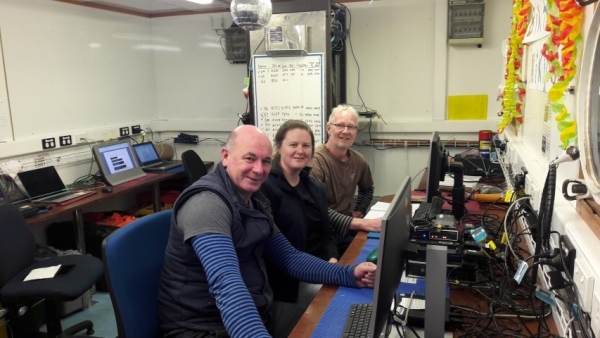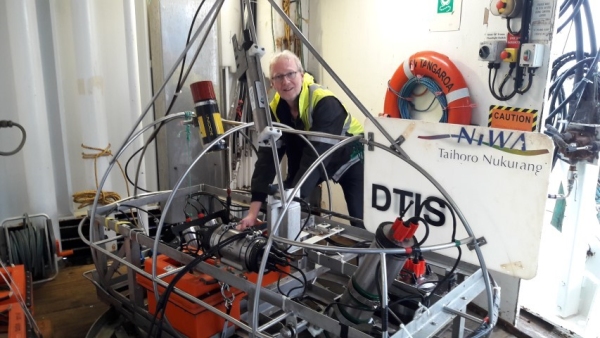Steve George, lead DTIS operator
Where are you from?
I was born and raised in Christchurch.
How long have you been working at NIWA?
I have been with NIWA and its predecessors for over 35 years.
What is your role onboard?
I am the lead Deep Towed Imaging System (DTIS) operator for this voyage which also includes fixing and repairing if necessary.
What is the hardest part of your job?
The hardest part is repairing the DTIS when something goes wrong. This has to be done in as little time as possible since it is the main system we are using on this voyage.
What’s do you love about your job?
The cool thing about my job is that I get to build camera systems, and then use them at sea
How many scientists are onboard at the moment?
At the moment, there are eight scientists and technicians that work on two shifts, alongside the standard crew that keeps the ship afloat. On this particular voyage, there are also two stewards to help with the COVID-19 restrictions.
Did you always know you wanted to do this type of work?
I was always interested in electronics and have been designing and building underwater camera systems for the last ten years.
What is the worse thing that can happen to a particular piece of equipment during a voyage?
Any time you put electronics in the water there is a chance that something will go wrong. For example, we once hit a rock on the bottom of the ocean with the video camera. The glass dome broke and flooded the camera... a total write off!
Have you ever been seasick?
I am lucky that I don’t get seasick now, but when I first started going to sea, I would occasionally get seasick during storms.
What is particularly interesting about pursuing a career in your field?
I combined electronics engineering with environmental and oceanographic research. This has opened up an entire range of opportunities for me, and it keeps my job really interesting.


